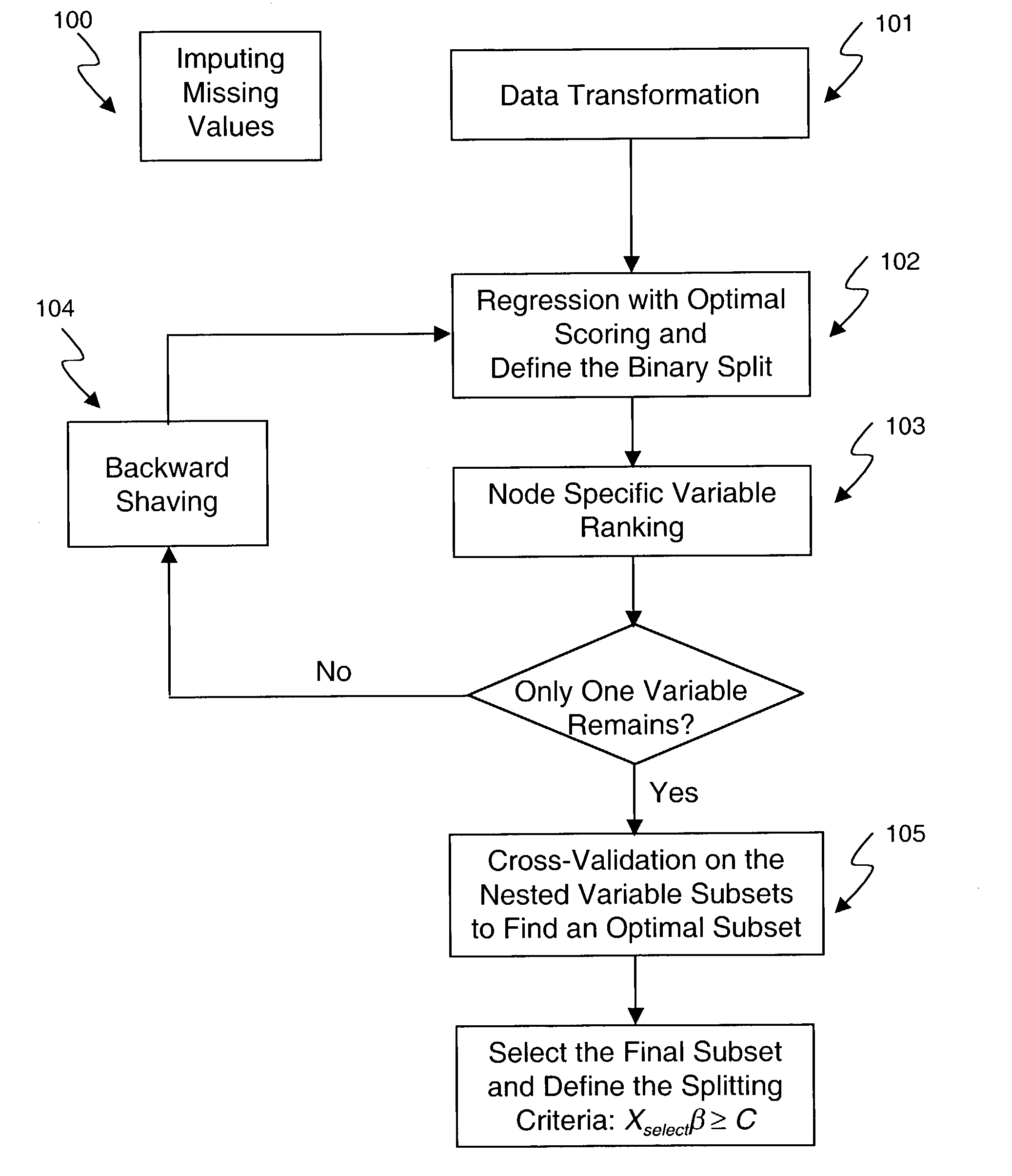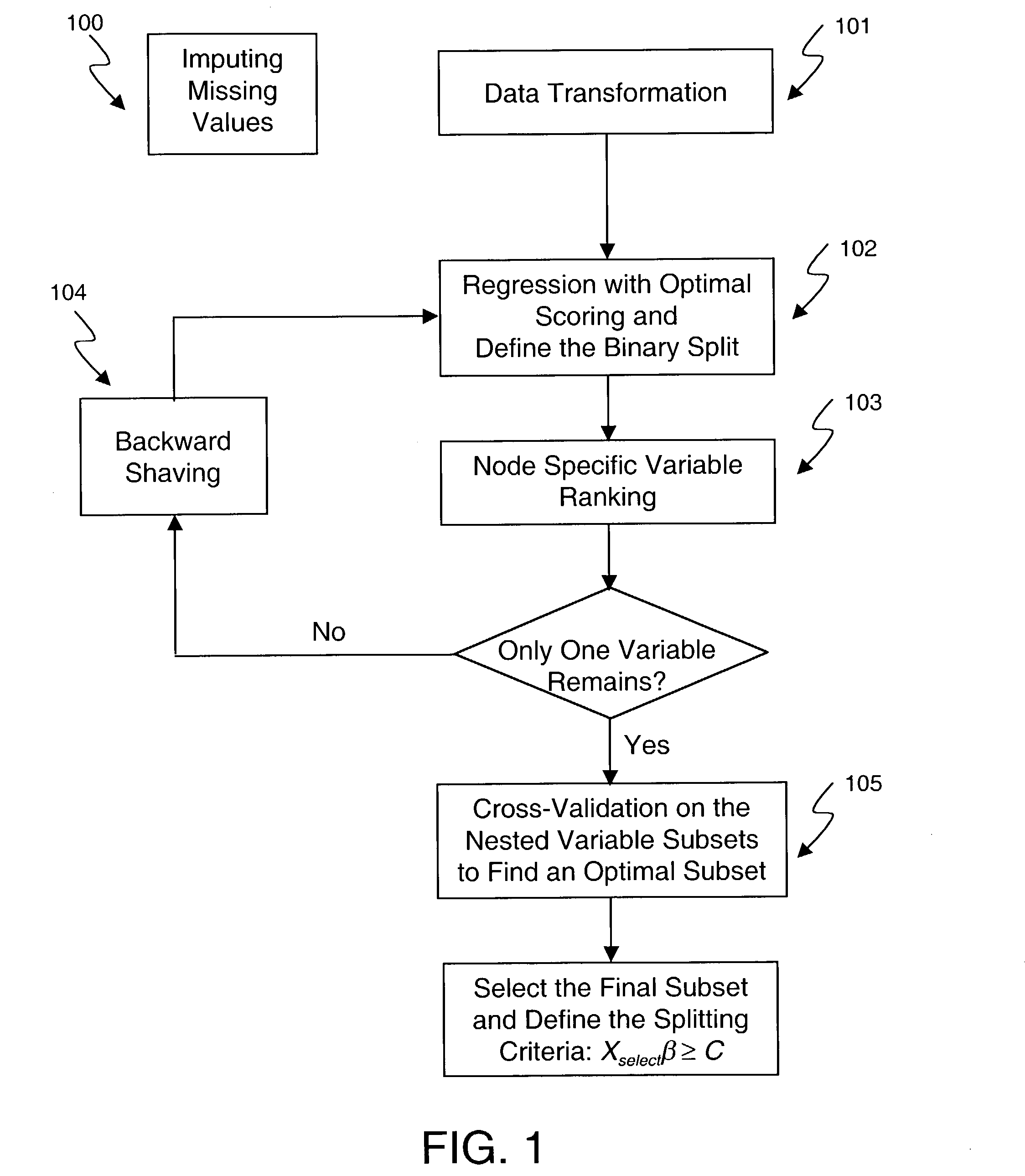Binary tree for complex supervised learning
a supervised learning and binary tree technology, applied in the field of data mining, can solve the problems of limited knowledge, preventing researchers from creating effective screening tests or treatments, complicated and influential interactions, etc., and achieve the effect of superior performan
- Summary
- Abstract
- Description
- Claims
- Application Information
AI Technical Summary
Benefits of technology
Problems solved by technology
Method used
Image
Examples
working examples
[0087]The methodology can be used in any situation in which a dataset is given with predictors and outcome (missing values are allowed in predictors, but not in the outcomes). It can be used for supervised learning on general or complex datasets. It is generally applicable to any complex datasets where multiple factors (predictors) determine an outcome and particularly applicable to assessing gene by gene interactions and gene by environment interactions related to complex diseases. Described below are examples of the above-described methodology and algorithm as applied to simulated and real-world complex datasets.
1. Simulations
[0088]Two groups of datasets are used in the simulations: one representing the cumulative effects and the other interactive effects. In this exemplary embodiment, they illustrate two possible pathways by which candidate genes work together to determine polygenic disease status. In the former case (cumulative effects), the contribution from each gene is small ...
PUM
 Login to View More
Login to View More Abstract
Description
Claims
Application Information
 Login to View More
Login to View More - R&D
- Intellectual Property
- Life Sciences
- Materials
- Tech Scout
- Unparalleled Data Quality
- Higher Quality Content
- 60% Fewer Hallucinations
Browse by: Latest US Patents, China's latest patents, Technical Efficacy Thesaurus, Application Domain, Technology Topic, Popular Technical Reports.
© 2025 PatSnap. All rights reserved.Legal|Privacy policy|Modern Slavery Act Transparency Statement|Sitemap|About US| Contact US: help@patsnap.com



